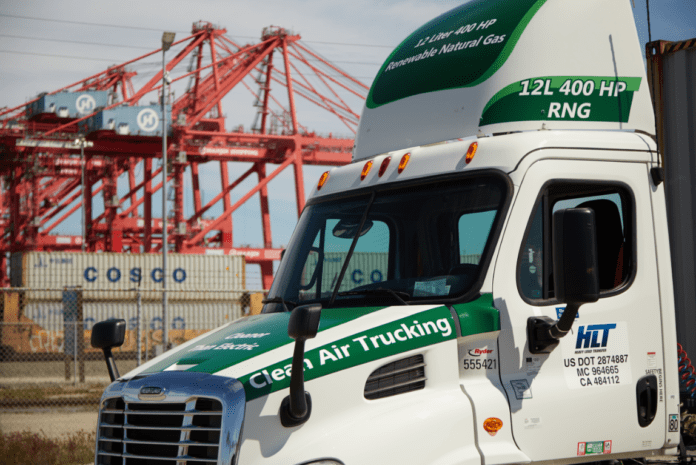Total Transportation Services Inc. (TTSI), one of the largest drayage trucking companies in the Ports of Los Angeles and Long Beach, has begun using one of the first Cummins Westport (CWI) ISX12 G low NOx natural gas engines for its trucking operations, according to the California NGV Coalition.
Available for order later this year, the 12-liter engine’s emissions will be certified by the California Air Resources Board (CARB) to produce 90% less NOx than the current U.S. Environmental Protection Agency standard for heavy-duty engines and are equivalent to that of a truck powered by electricity from the electrical grid.
“The trucking industry is facing hard choices on how we are going to reduce our emissions impact, especially here in Southern California,” says Victor La Rosa, CEO and president of TTSI. “We believe the quickest and most affordable way to cut our NOx emissions to essentially zero is with the new CWI engine and renewable natural gas [RNG].
“We’ve successfully operated natural gas trucks in the San Pedro ports since the last Clean Trucks program in 2008, and it’s great that we now have a dramatically improved engine and an even cleaner fuel with RNG,” he adds.
In 2016, CWI began full production of the 8.9-liter ISL G low NOx engine and shipped engines to bus and refuse truck OEMs. As reported, the ISX12 G low NOx engine is based on the 12-liter ISX12 G first introduced in 2012 and will start production early next year. CWI says it anticipates a large demand for this heavy-duty alternative fuel truck engine.
“We understand the importance of reducing NOx emissions, especially here in California and in the middle of one of the busiest transportation corridors in the nation,” notes Rob Neitzke, president of CWI. “This 12-liter engine, designed for heavy-duty trucks, can also reduce GHG methane emissions by 70 percent or more when run on renewable natural gas.”
The South Coast Air Quality Management District and the California Energy Commission supported CWI by providing development funding, recognizing the importance of this technology in helping California reduce emissions from heavy-duty trucks. According to estimates by CARB, about one-third of California residents live in communities with pollution that exceeds federal standards.
“We’ve made huge strides in improving air quality around the ports and across our region, but more needs to be done,” says Wayne Nastri, executive officer at the South Coast Air Quality Management District. “Industry leaders have developed cleaner solutions for the trucking industry that are available today. We applaud companies like Cummins Westport and TTSI for their leadership in adopting these technologies and making an immediate positive impact on the environment.”





